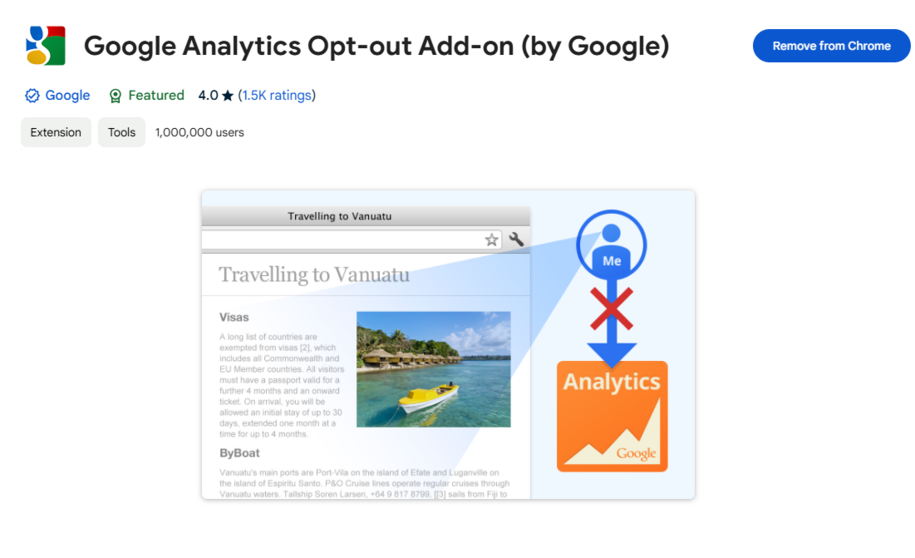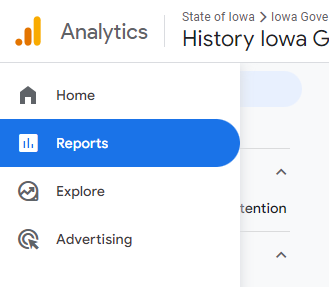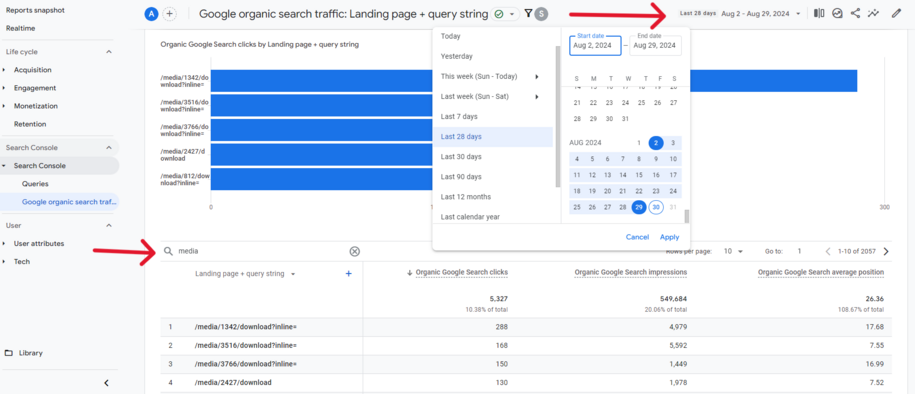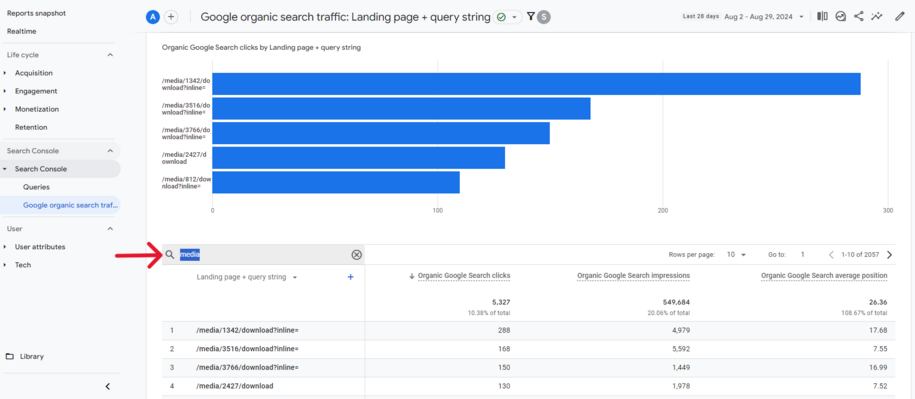On this page...
Why you should use Google Analytics Opt-Out Chrome Extension
Agency Content Editors should add the Google Analytics Opt-Out Chrome Extension. This extension stops Google from counting your visits to your agency website.

Create a report of Google organic search traffic
To generate a report on Google organic search traffic and analyze your document clicks and traffic, follow these steps:
Navigate to Reports
On Google Analytics, access the Reports section.
Select Google Organic Search Traffic
Under the Search Console section, click on the Google organic search traffic option to view relevant data.
Adjust the Date Range
In the upper right-hand corner, you can customize the report’s timeframe by selecting the desired date range.
Search for Media-Related Traffic
To locate clicks and traffic for media-related documents, use the search bar positioned above the Landing Page + Query String column. Simply type the word "media" to filter the results.
Benefits of tracking document clicks
Tracking document clicks helps us see how well content performs for several reasons:
- User Engagement: Clicks show how often visitors interact with content. A high number of clicks shows that users see the content as useful. Few clicks might mean it needs improvement.
- Content Relevance: Tracking clicks helps you see which documents or topics your audience likes and finds useful. This helps you tailor future content to fit their needs and preferences.
- SEO Insights: You can track clicks in Google Search Console. This shows how well your content ranks in search results. Many clicks from search engines mean your document is easy to find. It matches user search queries well.
- Performance Comparison: Compare document clicks over time. This shows how updates, SEO work, or marketing campaigns impact performance. This allows you to adjust your content strategy based on actual user engagement data.
Tracking this data helps you understand user behavior and see how well your content works. This helps you make ongoing improvements.
Back to top